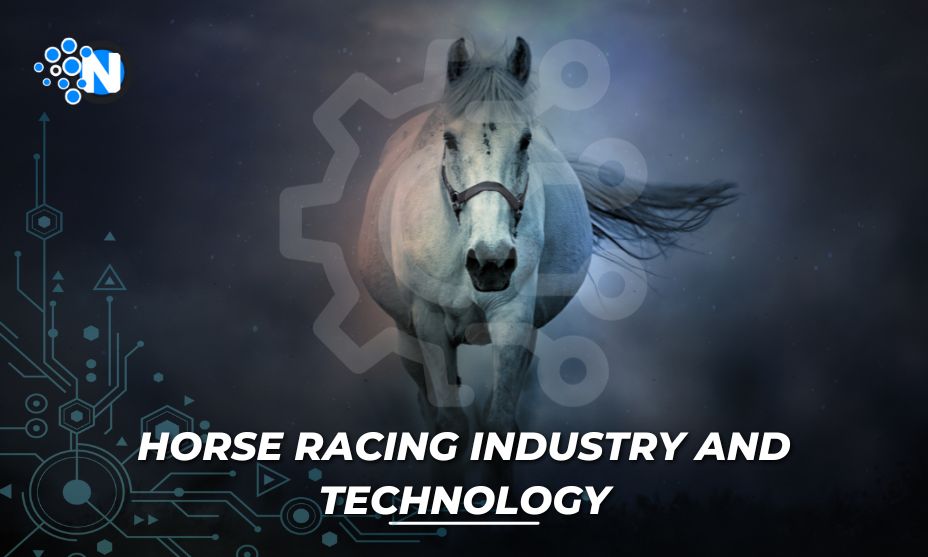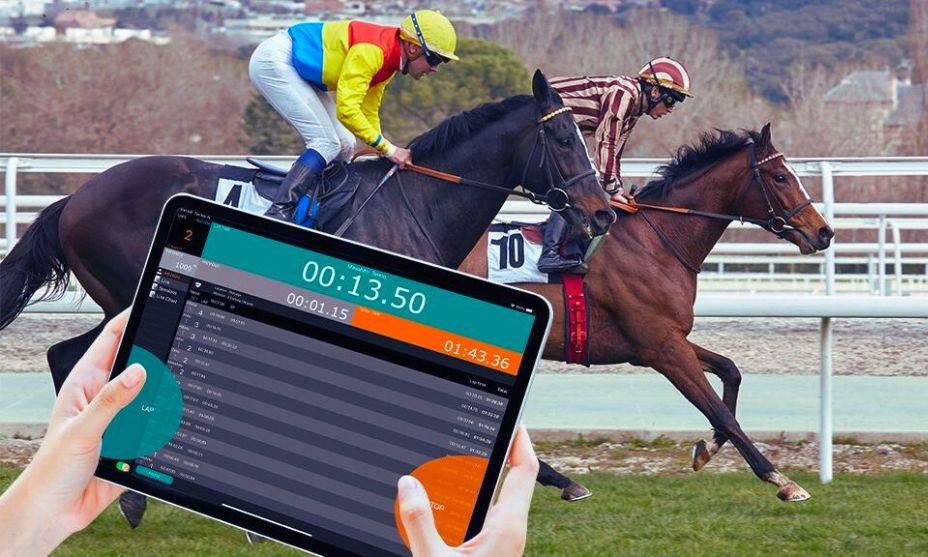How the Horse Racing Industry Has Embraced Technological Innovations

Horse racing has always had a special place in the hearts of sports lovers and enthusiasts of all kinds. Horse racing is a sport that mixes excitement from competing, the beauty of impressive horses, and fancy gatherings of rich people. The horse racing industry, deeply rooted in tradition, is also impacted by the wave of technological advancements.
This article explores how the horse racing industry has embraced and integrated modern technologies, fundamentally transforming the way races are conducted, horses are trained, horse racing betting websites like 1xbet IN are developed, and spectators engage with the sport.
Historical Perspective
Horse racing is among the oldest yet highly regarded sport in the world. It is also steeped in a centuries old history. It has traditionally been a sport of the nobles, and although the basic idea is that of horses against each other, some of the technological changes have changed the perception as well as conduct.
Horse racing used to be limited to local audiences and the results could be only passed via word of mouth, newspapers and limited radio broadcast. Nevertheless, technology has completely transformed the sport.
The Role of Technology in Modern Horse Racing
Modern technology has changed horse racing in several key areas, enhancing the sport’s accessibility, safety, and overall experience.
Tracking and Data Analysis
Tracking technology has become a vital part of horse racing. The introduction of GPS and RFID tags has allowed for the precise monitoring of a horse’s movements and performance data. These devices are often embedded in a horse’s saddle or bridle, providing real-time data on its speed, position on the track, and even its heart rate.
For trainers and jockeys, this data is invaluable. It helps them make informed decisions during training sessions and races. They can analyze the horse’s performance, detect signs of fatigue or injury, and adjust their strategies accordingly. In this way, technology has improved the overall well-being and safety of the horses, reducing the risk of overexertion and injuries.
Broadcast and Live Streaming
Advancements in broadcast technology have made horse racing accessible to a global audience. Live streaming, in particular, has brought the sport to screens around the world. No longer limited to spectators present at the racecourse, horse racing enthusiasts can now watch their favorite races from the comfort of their homes or even on the go through mobile devices.
This technological advancement has significantly expanded the fan base of horse racing. People from different countries and time zones can tune in to watch prestigious events like the Kentucky Derby or the Grand National, fostering a sense of global community among horse racing fans.
Monitoring Health and Performance
Technology-driven innovations in equine health monitoring have improved the welfare of racehorses and their performance. Wearable sensors and remote health monitoring systems have become common in the industry.
The horse wears wearable sensors like heart rate monitors and GPS trackers. These help give real time information on the health and physical condition of the horse. The trainer and the veterinarian can measure the horse’s heart rate, body temperature, and stress levels, which might enable early detections of distresses and diseases.
Besides, these sensors also allow trainers to design customized training programs for each horse. This gives insights to trainers on necessary changes regarding exercises, diets, and resting hours for the horses be in good condition for races. The racehorses’ careers have also experienced longer lifespan because each horse gets personalized care during this time.
Cutting-Edge Innovations in Horse Racing
The horse racing industry continues to push the boundaries of technology. Some cutting-edge innovations are not just enhancing the sport but also transforming how it is perceived and experienced.
Artificial Intelligence and Predictive Analytics
Artificial Intelligence and predictive analytics are making their mark on horse racing. AI algorithms are used to analyze vast amounts of data, including past performance, weather conditions, track conditions, jockey history, and even the horse’s mood. By processing this data, AI can predict race outcomes with remarkable accuracy.
For bettors, this technology provides valuable insights. Advanced AI algorithms generate odds and predictions, helping bettors make informed decisions. AI has taken the guesswork out of betting, allowing enthusiasts to strategize and increase their chances of success. These predictions have become an essential tool for both seasoned bettors and novices, making horse racing more accessible and engaging for a broader audience.

Wearable Technology for Horses
Horses are now equipped with wearable devices that monitor their vital signs and movements. These devices are often small and lightweight, designed not to interfere with the horse’s performance. Some of the key wearables include heart rate monitors, stride sensors, and GPS trackers.
Heart rate monitors are essential for assessing a horse’s exertion during training and races. They help trainers maintain the horse’s heart rate within a healthy range, preventing overexertion.
Stride sensors are attached to a horse’s leg or saddle. They measure the length and frequency of each stride, providing crucial data on the horse’s gait and efficiency. Trainers use this information to refine the horse’s stride and maximize its speed and stamina.
GPS trackers offer precise information about the horse’s position on the track, its speed, and the path it follows. This data is valuable not only for trainers but also for spectators who want to track their favorite horses in real-time.
Virtual Reality and Augmented Reality
Technological innovations have also enhanced the spectator experience. Virtual Reality and Augmented Reality have become part of the horse racing world.
With VR, spectators can immerse themselves in the race, almost feeling as if they are riding alongside the jockeys. They can switch between different perspectives, from a rider’s view to a spectator’s view, creating an incredibly immersive experience.
AR, on the other hand, overlays digital information on the real world. Spectators at the racecourse can use AR apps to access information about the horses, jockeys, and race statistics simply by pointing their smartphones at the track. This technology bridges the physical and digital worlds, making horse racing more interactive and engaging.
Read Also: Virtual Reality and Sports: A New Dimension for Athlete Training and Fan Engagement
The Impact on Betting and Wagering
Technology has transformed the betting and wagering aspect of horse racing. Online platforms and data-driven insights have reshaped the betting landscape.
Online Betting Platforms: The advent of online betting platforms has made it convenient for enthusiasts to place bets from anywhere in the world. These platforms offer a wide range of betting options, from straightforward win-place-show bets to exotic bets like exactas and trifectas. Enthusiasts can browse odds, study statistics, and place their bets with just a few clicks.
Live Odds and Data Updates: Real-time odds updates, along with comprehensive statistics, have improved the decision-making process for bettors. They can make well-informed decisions based on the latest odds and insights. Moreover, live updates on the horses’ positions and performance can enhance the excitement of the betting experience.
Ethical Considerations
While technology has brought numerous benefits to horse racing, it has also raised ethical concerns.
Race-Fixing and Cheating: The use of AI and data analysis can lead to a higher risk of race-fixing or cheating. As technology becomes more integral to the sport, regulating its use to maintain fairness and integrity has become a critical concern.
Welfare of Horses: While wearable technology and remote monitoring have improved the health and safety of racehorses, there are ethical considerations. Questions arise regarding the ethical use of wearables and other performance-enhancing technologies. Ensuring that these technologies prioritize the well-being of the horse and do not compromise its health or comfort is a constant challenge.
Future Trends
The horse racing industry’s technological journey is far from over. The pace of innovation continues, and several future trends are worth noting:
Enhanced Data Analytics: Data analytics will become even more sophisticated, providing trainers, jockeys, and bettors with increasingly accurate insights into horse performance and race outcomes.
AI Jockeys: The development of AI jockeys is a possibility. AI-driven robots could take on the role of jockeys, offering a level of precision and performance optimization that human jockeys cannot match.
Immersive AR and VR: Augmented reality and virtual reality experiences may become more immersive and widely available to spectators. This will further blur the lines between reality and digital engagement.
Conclusion
Technology has injected new life into the world of horse racing. It has made the sport more accessible, improved equine welfare, and revolutionized the betting landscape. As the industry continues to innovate, it is poised for a future where tradition and technology coexist, offering a thrilling experience for all involved.




